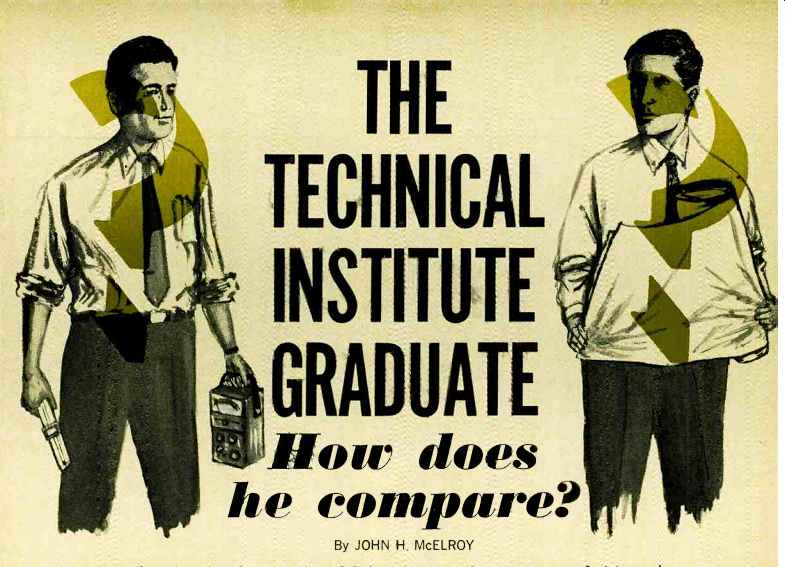(source: Electronics World, Apr. 1968)
In spite of a shortage of qualified engineers and engineering technicians, the technical institute graduate with an A.S.E.E. degree or equivalent is not being fully used. Due to lack of knowledge of the extent and depth of his training, the scientific and the professional community often undervalues such a graduate and denies itself the benefit of his ability. Here is a comparison between courses offered by a number of universities and tech institutes; results may surprise you.
----------------
Editor's Note: Our author is an electrical engineer who is. currently engaged in laser research for NASA. Prior to obtaining a degree in electrical' he graduated from a technical institute and worked as an electronics technician for nearly twelve years. For five of those years, he served as an instructor and technical writer on guided-missile electronics. Functioning as both a technician and engineer has given him an unusual view, of the electronics industry.
A disturbing aspect of the industry that the author has observed--and with which we concur--is the profound ignorance of many engineer., with regard to the training offered by the nation's technical institutes as well as schools and colleges offering associate degree programs in electronics technology. Few engineers or engineering supervisors appreciate the technical depth of these programs. As a result, there has been in some cases gross under-utilization of the skills of the technical institute graduate simply because his supervisor believed that he had received only very low level training.
There is no excuse for this attitude, especially today when both our universities and technical institutes are graduating an insufficient number of trained technical people. The following article is the result of the author's and of the editor's concern about this particular situation.
-----------------
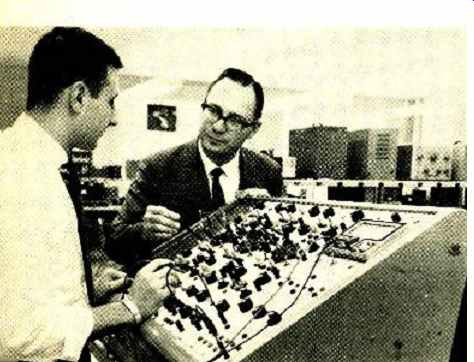
ABOVE: Design techniques are an important part of the technical institute
student's training. In this photo an instructor checks out student-designed
circuit with transistor circuit synthesizer.
THE shortage of qualified engineers and technicians needed to supply the ever-increasing demands of the electronics industry has been the subject of more speeches and articles in the last year than perhaps any other technically oriented topic. Simple business economics dictate that when a shortage exists, a careful examination should be made of how well the available supply is being utilized. This article concerns the utilization of the technical institute graduate-the graduate of a 27-month program which leads to the awarding of a certificate or an associate degree in electrical engineering or technology.
Present such programs in electronics technology, as well as two-year programs offered in some colleges and technical institutes leading to associate degrees, exhibit a depth which is Often surprising to practicing engineers, other technologists, and engineering supervisors. Because of simple ignorance of the extent of his training, the scientific and professional community often undervalues the technical institute graduate and consequently denies itself the benefits of his training.
The purpose of this article is to clarify to both technicians and engineers the way in which the training provided by a number of technical institutes compares with that given to engineering students at several representative colleges. It will be shown that the technical institute graduate compares favorably in some respects with the typical engineering graduate-in spite of the comparisons being drawn between an associate degree program normally lasting 27 months and a baccalaureate program requiring a minimum of four years.
It will be shown that, at least in the cases studied, the technical institute graduate has had at least as many and usually more hours of instruction in his field of specialization than has the typical engineering graduate. It will be further shown that the technical institute graduate cannot be regarded as mathematically illiterate, since he has been exposed to nearly the same range of mathematical topics as the engineer, although not necessarily at the sane depth.
The technical institute graduate's mathematical background will be shown to be more then adequate to carry him far into the theoretical aspects of his chosen field. Convincing evidence will be given to warrant a careful study of the employment of each technical institute graduate by his supervisor to ensure that his abilities are being well utilized.
Making the Comparison
For purposes of comparison, the curricula are divided into the following areas: English, other non-technical subjects, chemistry, physics, engineering fundamentals, mathematics, and electrical engineering or electronics technology. This division seemed most appropriate in order to take in the various curricular differences.
Four universities were selected for use in the comparison. Each is accredited by all appropriate authorities, including the Engineer's Council for Professional Development. They are representative of the schools which produce the majority of the electrical engineering graduates each year in the United States. Although it was inevitable that the author's personal bias would be reflected in the schools that were chosen, every effort was made to select only distinguished schools with fine reputations. The name of each would be instantly recognized by any person in the electronics industry.
Three technical institutes were chosen for the comparison. Each would certainly rank in the top 10 technical schools in the country. Like the universities, these schools and their programs are accredited by all regional and national authorities. It will be noted that the names of the universities and technical institutes do not appear in the article. It was not the author's intention to either praise or condemn a particular school, but to indicate how representative programs compare.
Results of Comparison
The results of the comparison are shown in a series of bar graphs. These graphs show the number of semester hours that a student would take in each of the subject areas.
A semester hour is approximately the equivalent of attending class for one hour each week for one fifteen-week semester. A three-semester-hour course, therefore, represents nominally 45 hours of classroom instruction. Some of the bar graphs relating to the universities are made up of both a solid and a shaded portion. The solid portion represents the number of hours required by the university as a minimum. The shaded portion is the number of additional hours that a student might elect to take in that area. It would be a rare graduate whose education contained either all or none of the shaded portions-the average program would include some elective subjects. It is not possible to be more specific because of curricular differences between schools and between individuals within the sane school.
The first comparison concerns the subject of English and is shown in Fig. 1. It was surprising to find that one of the technical institutes requires more hours in this subject than any of the universities. This contrasts sharply with the view that a technical institute gives only a very narrow education. While it must be admitted that some technical institutes spend a certain amount of time on remedial work which is below university level, it is highly creditable for the technical institutes to make any sort of comparable showing at all.
The area of other non-technical subjects is shown in Fig. 2. This area includes government, history, philosophy, and other courses of a similar nature. Considering the limited amount of time available to the technical institutes, their relative weakness in this area is not unexpected. Note, however, that these subjects are not entirely neglected by two of the technical institutes.
Fig. 3 shows the next area to be discussed, chemistry.
This too was a surprising area. Two of the technical institutes give no instruction in chemistry, just as expected.
On the other hand, the remaining technical institute requires an amount just short of that required by the universities.
The comparison of physics programs shown in Fig. 4 is somewhat deceptive. Although the number of hours the technical institutes devote to physics is not unrespectable, a closer examination of the curricula reveals that the courses are usually conducted at a somewhat lower mathematical level. It is not unexpected, nor a criticism of the technical institutes, that they should trail the universities in this subject. Physics is one of the areas in which the engineer should quite naturally receive more and deeper instruction than the technician or technologist. This area has been one which has seen increased emphasis in recent years as the trend toward a better scientific background for the engineer has become established.

Fig. 1. Surprisingly, one of the technical institutes required more hours
of English than any of the universities. Fig. 2. Non-technical subjects,
such as government and history, are not entirely neglected by two technical
institutes.
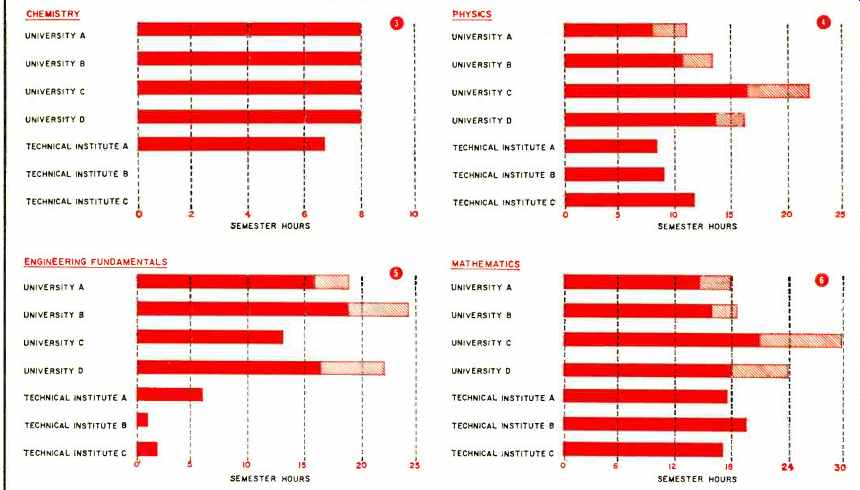
Fig. 3. Chemistry is included at one of institutes surveyed. Fig. 4. Most
of the physics courses offered by the institutes are conducted at a somewhat
lower mathematical level. Fig. 5. Engineering fundamentals include courses
in engineering drawing, thermodynamics, statics, dynamics, and materials.
Fig. 6. The important subject of mathematics is well represented in the
curricula of the three technical institutes.
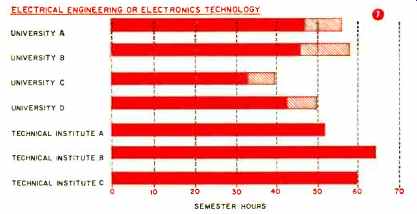
Fig. 7. The specialized technical
institute is very strong in courses covering electrical
engineering and technology.
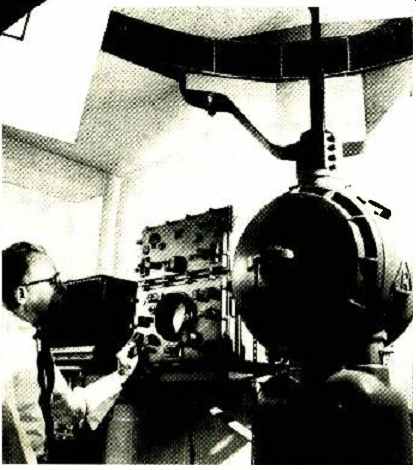
---- Practical side of electronics is not neglected at the technical
institute. Here an instructor sets up a simulated problem in range finding
for his course in microwave and radar.
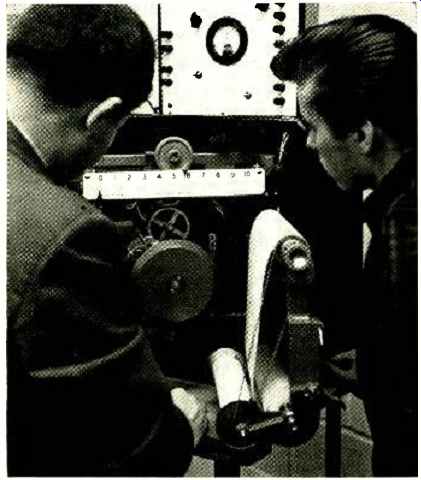
----- The modern technical institute student receives training in
a good many fields. The student and instructor shown are engaged in temperature
measurement in an instrumentation lab.
The fifth area studied, engineering fundamentals (see Fig. 5) , consists of courses in engineering drawing, thermodynamics, statics, dynamics, mechanics of materials, and fluid mechanics. None of these subjects, with the single exception of engineering drawing, has been a traditional part of the training provided by the technical institute.
The subject of mathematics is covered by the sixth graph (Fig. 6). Math coverage has been the traditional demarcation between the technician and the engineer. As is shown in the graph, that boundary has been the object of a vigorous assault by the technical institutes. The technical in presented by the technical institutes cover the vast majority of his needs. This is not true for the research engineer probing deep into the frontiers of his profession, at least not in all cases, but it is certainly true for the average working engineer with a bachelor's degree.
Electronics Technology
The last area of comparison is the most important of all--electrical engineering or electronics technology. The seventh graph (Fig. 7) clearly shows the results of the specialization of the curriculum of the technical institute.
Each of the technical institutes surpasses each of the universities in the number of required semester hours in this subject. A closer examination of the curriculum reveals an even more surprising fact. If the total number of hours that a student actually spends under the supervision of an instructor (both classroom and laboratory) are determined, it is found that each technical institute requires more contact hours than any of the universities. In one case, a technical institute requires more than twice as many contact hours as three of the universities.
Even this impressive showing would not warrant the statement that the technical institute graduate has reached a level of training in some areas that approaches that of many engineers. However, if the individual course offerings are examined, it is seen that great similarities exist between courses covering the same subject matter at the two types of institutions. (As a matter of fact, we know of cases where the same textbooks. are used, although the course given in the technical institute is somewhat longer than that offered by the university. - Editor)
As an illustration, two areas will be given special attention: electromagnetic field theory and automatic control systems. These two areas were chosen because they are usually considered to be more demanding than such subjects as beginning circuit theory and electronics. Consider first electromagnetic field theory. Technical Institute C provided the following course descriptions in this area: Electromagnetic Fields: Vector analysis, an important mathematical tool in field theory, is undertaken before the subjects of electric and magnetic fields are considered.
The fundamental laws and equations of these two fields are discussed with many applications given. Time-varying fields are discussed, leading to Maxwell's equations.
Lines and Antennas: The first part of this course is an analytical study of transmission lines at audio and radio frequencies, covering the general development of transmission-line theory and its special application to the transmission of r.f. power, including the use of line sections in place of lumped constants in the v.h.f. and u.h.f. ranges.
Extensive use is made of the Smith chart in the graphical solution of transmission-line problems. The second part is a continuation of the analytical study of electromagnetic fields . with the application of Maxwell's equations in the analysis and design of transmitting and receiving antennas.
Microwaves: An analytical study of the components used in that portion of the frequency spectrum assigned to u.h.f. and microwave applications. Beginning with u.h.f. tube types and transmission-line oscillators and amplifiers, the course continues with the analysis of microwave tubes employing the velocity modulation principle.. Maxwell's equations are applied in the mathematical analysis of the rectangular waveguide and in the discussion of the circular waveguide and cavity resonator.
Technical Institute A gives a course entitled simply "Field Theory ". Its course description reads: Static fields, electric and magnetic; quantitative relationships; Maxwell's equations; vertical, horizontal, and elliptical polarization; elementary antennas; interference; reflection; refraction; diffraction; transmission lines: tuned, untuned, characteristic impedance, matching stubs, Smith chart.
A further course in waveguides, antennas, and propagation follows the field theory course.
Compare these course descriptions with the following received from the universities. University C administers a two-semester course entitled "Fields and Waves ". It has the following course description:
An introduction to the theory of electromagnetic fields with stress on physical concepts and engineering applications. The fundamentals of electromagnetic theory in vector notation, circuit and field concepts at low and high frequencies. Maxwell's equations. Propagation and reflection of plane waves; solution of the wave equation, waveguides, cavity resonators, radiation from antennas and antenna arrays.
University D provides the following description for its course in electromagnetic theory:
Discussion of static magnetic and time-varying electromagnetic fields leading up to electromagnetic propagation and some elementary applications. Magnetic polarization and circuits. Ferromagnetic materials. Motion of charged particles in static fields. Faraday's law, displacement current, continuity equation. Maxwell's equations and boundary conditions. relation between field and circuit their) . Plane waves, polarization and reflections; traveling and standing waves. Skin effect. Poynting's theorem. Simple waveguides and resonators.
It is obvious that there must be a fairly substantial overlap between the subject matter presented by the technical institutes and that presented by the universities.
The next area to be considered is automatic control systems. Technical Institute A offers a course in this are: which has the description:
Automatic Control Systems. General aspects: general theory, components, mathematical tools, stability criteria, design considerations. Servo components: error detectors, synchros, potentiometers, amplifiers, electric and hydraulic drive equipment, transducers. Transfer functions; stability theory: Bode plots, Routh's method, Nyquist plot. Transient response and the effect of varying parameters.
Technical Institute C requires two courses on this subject. The first is described as:
Control Systems Components: Introduces the students to characteristics and performance of linear control systems with one or more feedback loops. The functions and properties of various components encountered in control systems are studied. These include servo motors, generators, synchros, servo amplifiers, and error detectors. Differential equations, Laplace transform methods, and pole zero techniques are employed.
The second course is described as:
Control Systems: Presents a more intensive study of servo systems by means of frequency loci, Nyquist, root locus, Bode, and Nichols plots. Stability criteria are developed and methods of stabilization and system synthesis are considered. Pole-zero S-plane analysis is used.
These may be compared with a course required by University A which is listed us: Description of dynamic systems in frequency and time domains; stability analysis; analysis and design in the frequency domain (Bode, Nyquist, root locus, etc.). University B offers a course described as: A study of linear feedback control systems, their physical behavior, dynamical analysis, and stability. Laplace transform, frequency spectrum, and root lochs methods are employed. Introduction to system design and compensation.
Again, it is seen that striking similarities exist.
Similar and even more striking comparisons can be made in the areas of electronics and circuit theory. It was the author's intention to select areas in which the comparison would be most unfavorable to the technical institutes so that their surprising strength even in these areas where the most advanced mathematical techniques are employed could be demonstrated.
Important Conclusions
The following conclusions may be reached from the preceding survey. First, the technical institute graduate of the type of program described in this article is a highly trained professional. Second, he has received instruction in his major which is in some respects superior to that of an engineer. Third, organizations employing technical institute graduates must be particularly vigilant to utilize then in tasks which are in keeping with their training and capacity.
Their training is more than adequate to relieve the organization's professional engineering staffs of many duties.
Fourth, the organization which finds itself short of engineering personnel should carefully examine the job vacancies to determine the precise technical requirements of the job. In a surprising number of cases, it will be found that the demands of the job can be more than met by the technical institute graduate.
